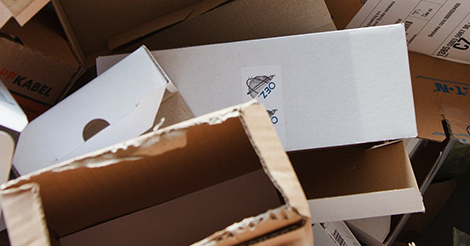This post is Part 3 of the Series: Understanding The Drug Supply Chain Security Act and What it Means for Pharmaceutical Distribution Companies. For a full list of all the topics in this series, please see the bullet points at the end of this post.
As discussed previously, one of the main reasons for the “Drug Supply Chain Security Act (DSCSA)” is to prevent the insertion of illegitimate products into the drug supply chain. In this third installment of the Series, we will discuss what pharmaceutical distribution businesses need to know to identify, handle and notify the FDA in the event they come across a suspect/illegitimate product in the supply chain.
The DSCSA references a document, revised in December, 2016 titled Drug Supply Chain Security Act Implementation: Identification of Suspect Product and Notification. This document explores scenarios for product entering the supply chain and then provides recommendations on how trading partners can identify and determine if product is suspect, how to notify the FDA in the event of identifying product as suspect and how to terminate a notification if a suspicious product is "cleared" and no longer suspicious.
Identification of Suspect Product
A “Suspect Product” as defined in the Federal Food, Drug, and Cosmetic Act FD&C is a product for which there is reason to believe is counterfeit, stolen, adulterated such that the product would result in serious adverse health consequences, is potentially a subject of fraudulent transaction, or appears unfit for distribution. In general, trading partners need to be vigilant when receiving products and maintain awareness about suspicious activity or potential threats to the supply chain. The DSCSA document dictates that trading partners be more vigilant in a variety of scenarios, including:
- When purchasing from a new trading partner
- When receiving unsolicited sales offers from unknown sources
- When purchasing from the internet from unknown sources
- When purchasing from a source that a trading partner knows has been involved with suspect products
- When product is in high demand and was previously in short demand
- When products have suspicious packaging/labeling (ie. misspelling, different drug identification, missing lot or expiration date information)
- When product has a finished dosage or imprint different from what the FDA has approved
- When prices are too good to be true
- When packaging appears to have been tampered with
Handling of Suspect Product and Notification
As of January 1st, 2015 the DSCSA requires trading partners, upon determining that a product in their possession or control is illegitimate, to notify the FDA and all immediate trading partners (that they have reason to believe may have received the illegitimate product) no later than 24 hours after making the determination. Once this is complete, the trading partner must “quarantine” and remove the product from the supply chain until the suspect product is cleared.
The next step involves immediately launching an investigation in coordination with applicable trading partners, validating the product using Transaction History and Transaction Information. It is the responsibility of the trading partner who launched the investigation to maintain all records pertaining to the investigation for no less than 6 years, and as part of the process, submit and record a form – FDA 3911 Drug Notification – to the FDA.
Termination of Notification of Illegitimate
Upon determination that the concerns around a product being suspect are not valid, the FDA and all trading partners must receive notification. The trading partner who originally identified the product as being suspicious and as a result submitted an FDA 3911 form, must complete and submit a new FDA 3911 form to the FDA, indicating that they have evidence that the product in question is not suspect. This submission for termination of the original suspect notification is known as a “request for consultation with FDA” and is required by the Federal Food, Drug, and Cosmetic Act (FD&C Act).
Managing Requests and Submitting Information
Under the DSCSA, trading partners are required to have a system in place to (1) quickly respond to a request from the FDA for verification of a product, (2) quarantine a suspect product and (3) promptly start an investigation. There is no requirement currently that a trading partner manage any of these processes electronically, however, certain systems provide functionality for managing the processes and requirements outlined as part of the DSCSA. For example, the right system allows trading partners to:
- Store detailed information on lot controlled products, sales and purchase history (Pedigree and Transaction Reporting)
- Manage information and images pertaining to the shape, size and description of product
- Quarantine and remove product from the supply chain that is considered suspect
Learn more about the Drug Supply Chain Security Act (DSCSA) and Pharmaceutical Distribution Software.
- Blog: Part 1 – Drug Supply Chain Security Act (DSCSA) and Pharmaceutical Distribution
- Blog: Part 2 – Drug Supply Chain Security Act (DSCSA) Transaction Report (T3)
- Blog: Part 3 – DSCSA: Suspect and Illegitimate Product Handling and Notification
- Blog: Part 4 – Serialized Numerical Identifier (SNI) and the Drug Supply Chain Security Act
- Blog: Part 5 – Drug Supply Chain Security Act (DSCSA) – Annual Reporting
- Blog: Part 6 – How to Manage DSCSA Requirements with Pharmaceutical Software
Information in this post was taken from the DSCSA, Draft Guidance for Industry DSCSA Implementation: Identification of Suspect Product and Notification and other various presentations provided by the FDA. The information contained herein is provided as a summary and guidance only. For specific requirements go to “Drug Supply Chain Security Act (DSCSA)” and associated FDA Guidance Documents.










